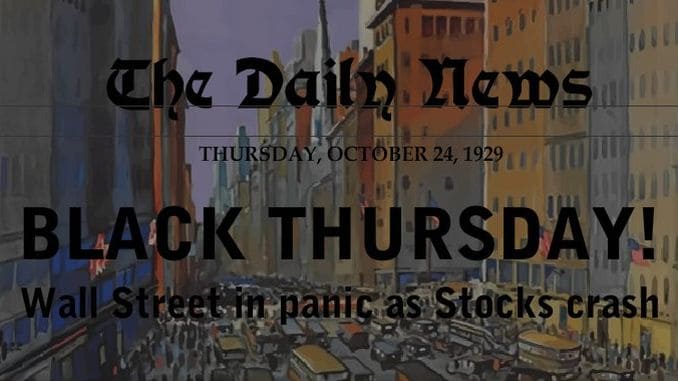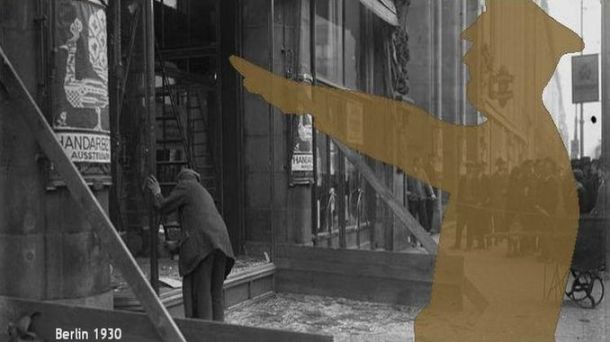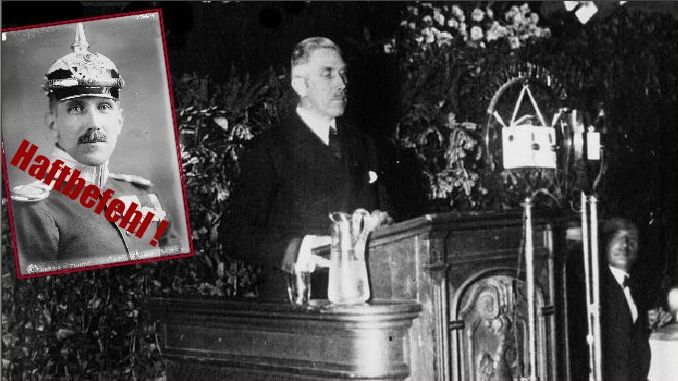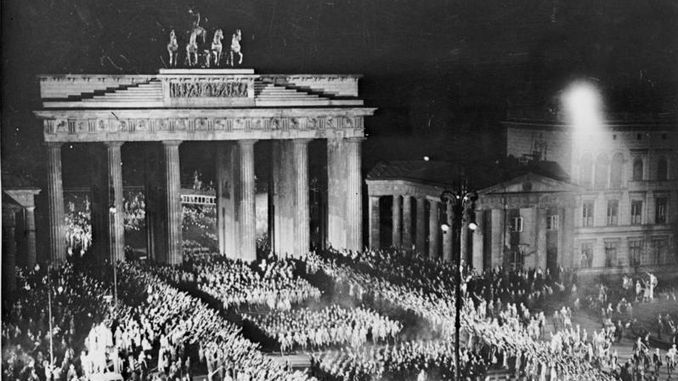
Depression and decline
Foreign loans had helped Germany to recover economically and get back on her feet again. But then the “Black Thursday” in New York changed everything. The stock market into widened into a global crisis, sent the USA into the Great Depressing. The Weimar Republic faced another devastating crisis.
World Economic Crisis
On October 24, 1929, a stock exchange crash in New York widened into a world economic crisis and global depression. It caused high unemployment in industrial countries, bank failure and collapse of credit. In Germany, the depression led to economic collapse, mass unemployment and pauperization. The acting grand coalition under Chancellor Hermann Müller (SPD) broke apart in March 1930. It was the last parliamentarian democratic administration of the Weimar Republic.
Chancellor Brüning
On March 29, 1930, Reichspräsident Hindenburg appointed the finance expert Heinrich Brüning (Center Party) Chancellor. In Brüning’s eyes, the only way for Germany to survive financially was to cut state expenditures drastically. Above all, it meant cuts in the social sector that would affect people greatly.
Ruling by emergency decrees
However, Brüning had no majority in the Reichstag, and his plan was turned down. Now he submitted it to Reichspräsident Hindenburg. Hindenburg passed it as an emergency decree according to article 48 of the Weimar Constitution. From now on, Brüning ruled by emergency decrees. That is to say, he depended on the Reichspräsident’s trust, not the Reichstag’s. In reality, the short time of parliamentarian democracy was over.

Landslide victory of the Nazi-Party
The extremists become stronger and stronger, among them Adolf Hitler and the National Socialist movement. Hitler’s party, the NSDAP, had promised to reduce unemployment and do something against the detested Treaty of Versailles. The movement was anti-Semitic, anti-Communist, and planned to do away with democracy.
In the election campaign for the Reichstag elections in September 1930, the parties mainly courted young voters and nonvoters. The political struggle took more and more radical forms. Combats units were raiding the streets, attacking, even killing political opponents. The Nazi SA and SS as well as Stahlhelm on the extreme right, Roter Frontkämpferbund on the extreme left.
The Reichstag elections resulted in an overwhelming success for the Nazi Party. Instead of a marginal group, there was a brown bloc of 107 Nazis in SA uniforms in the Reichstag. Now the democratic parties tolerated Brüning’s policy, to avoid new elections that would probably bring even more votes for the extremists.
Hindenburg’s re-election and Brüning’s fall
In July 1931, one of the biggest German banks collapsed, and in early 1932 the number of unemployed rose to more than 6,000,000. Brüning struggled to alleviate the burden of reparation payments, and indeed in 1931 the American President Hoover passed a memorandum postponing reparation payments for one year.
In March and April 1932, Hindenburg was re-elected Reichspräsident for a second term. In the second round, it was between him and Hitler, and since only Hindenburg could defeat Hitler, the Center Party, the Social Democrats and other democratic parties had supported him.
However, Chancellor Brüning had made mighty enemies, especially among the Prussian landowners in Hindenburg’s entourage. On May 30, 1932, the Reichspräsident dismissed him. “A hundred meters before the finish”, as Brüning said, because in 1932, the reparations were reduced to a final payment and afterwards let off. Hindenburg now appointed Franz von Papen, a staunch Conservative.

“Preußenschlag” (Prussian Coup)
Throughout the years of the Weimar Republic, the Free State of Prussia had been a pillar of democracy. Prussia had banned the Nazi SA and SS, the right-wing Stahlhelm and other paramilitary extremist groups. Extremists could not get into civil service.
However, the Prussian Government had mighty enemies. Under the pretext that it had lost control of public order in Prussia, Chancellor von Papen issued an emergency decree. On July 20, 1932, he unseated the Prussian Government, appointed himself Reich Commissioner for Prussia. The democratic Free State of Prussia had ceased to exist.
Hitler’s chancellorship
Von Papen could not win Hitler over and most parties opposed him, so he had the Reichstag dissolved and called for new elections. In the Reichstag general elections of July 1932, the Nazi Party became the largest party, also the Communists had major gains. Together, the anti-democratic extremists hold the majority. Hitler demanded the chancellorship for himself, but Hindenburg rejected. Since there was no majority in the Reichstag for any government, it was dissolved again. The Reichstag general elections of November 1932 resulted in a victory for the Communist Party who became the strongest faction in the Reichstag, whereas the Nazi Party lost votes. Franz von Papen stepped down. General Kurt von Schleicher took office in December, but he had no majority either.
On January 30, 1933, pressured by former Chancellor Franz von Papen and other conservatives, President Hindenburg finally appointed Hitler Chancellor.

A look beyond the Rhineland
Brüning left Germany and spent many years in the United Kingdom and in the USA. He taught political sciences at the Harvard University, and died in 1970 in Norwich, Vermont. Still today, he is a controversial figure.
20th century
Intro The short 20th century | The Great War | German Revolution 1918/19 | Occupation of the Rhineland | Weimar Republic | Nazi Germany | World War II | Federal Republic of Germany
References
The following images are from the German Wikipedia, licensed Creative Commons Attribution-Share Alike 3.0 Germany
- Kondolenzbesuch Friedrich Ebert, Ebert begibt sich in das Haus des ermordeten Rathenaus, Attribution: Bundesarchiv, Bild 102-00001A / CC-BY-SA 3.0
- Weimar, Vereidigung Eberts, 1919, Atrribution Bundesarchiv, Bild 146-1978-042-11 / Sennecke, Robert / CC-BY-SA 3.0
- Kapp-Putsch, Brigade Ehrhardt. Berlin, Attribution Bundesarchiv, Bild 183-H25109 / CC-BY-SA 3.0
- Dortmund, Hauptbahnhof, Attribution Bundesarchiv, Bild 102-00025 / CC-BY-SA 3.0
- Inflation, Käuferschlange vor Lebensmittelgeschäft „Butter-Handlung“ der Gebrüder Groh, Hoflieferanten, Attribution Bundesarchiv, Bild 146-1971-109-42 / CC-BY-SA 3.0
- Berlin, Wohltätigkeits-Festessen im Hotel Adlon, Attribution: Bundesarchiv, Bild 102-00757 / CC-BY-SA 3.0
- Demolierte Schaufensterscheiben bei Wertheim, Berlin , Attribution: Bundesarchiv, Bild 102-10561 / CC-BY-SA 3.0
- Berlin, SA-Aufmarsch am Brandenburger Tor, Attribution, Bild 137-048390 /CC-BY-SA 3.0
- Armenspeisung Berlin, Attribution: Bundesarchiv, Bild 183-T0706-501 / CC-BY-SA 3.0

Be the first to comment